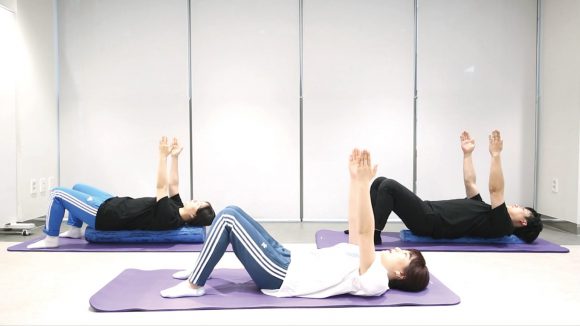With the development and dissemination of IT devices such as smartphones and tablet PCs, online content and media can be easily accessed anytime, anywhere. In particular, as the scope of activities narrowed due to COVID-19, the time spent using IT devices increased. In fact, according to an online survey, the proportion of the overuse group using smartphones for more than 4 hours a day has nearly doubled compared to pre-COVID-19. Using a smartphone for a long time can cause changes in the musculoskeletal system, and the most representative example is the round shoulder.
Round shoulder refers to a shape in which the head is forward and the shoulder is curled inward as the chest muscles contract. There are various causes, but the main cause is using a smartphone or computer for a long time in a slouched posture, and it appears along with turtle neck syndrome, in which the head falls forward due to a deformed C-shaped cervical vertebra. Be careful with round shoulders, not only for cosmetic reasons, but also because they can harm joint health. The most common joint disease that can be caused by a round shoulder is shoulder impingement syndrome.
Shoulder impingement syndrome is a disease in which the rotator cuff tendon that surrounds the shoulder collides with the upper shoulder bone (acromion) and becomes inflamed.
Seongcheol Moon, Vice President of Joint Center at Gangnam Nanuri Hospital, said, “The rotator cuff moves the shoulder smoothly and maintains stability. It is the shoulder impingement syndrome that occurs.” He said, “If the shoulder is rolled forward due to the round shoulder, the space between the acromion and the humerus may become narrow and damage to the rotator cuff may occur.”
Shoulder impingement syndrome doesn’t feel much when you’re standing still, but it hurts when you lift your arm up. There is also a clicking sound in the shoulder when turning or moving the arm.
The problem is when shoulder impingement syndrome is neglected. If shoulder impingement syndrome is left unattended, it can continuously collide with the rotator cuff whenever the arm is moved, leading to rupture. Once the rotator cuff is ruptured, it is difficult to heal naturally, so if you suspect symptoms of shoulder impingement syndrome, you should seek appropriate treatment.
Above all, efforts to prevent shoulder impingement syndrome are necessary. Correcting the round shoulder with the right posture and regular exercise also helps to prevent shoulder impingement syndrome.
Seong-cheol Moon, deputy director of the Joint Center at Gangnam Nanuri Hospital, said, “The round shoulder itself is not a disease, but you should be careful as these changes in body shape can harm joint health.” If the back of your hand is facing forward, you need to suspect the round shoulder and try to correct it through regular exercise and a habit of maintaining a normal posture.”
round shoulder corrective exercise

1. Lie on your back and draw a circle with your arms
– Lie on your back with your knees bent.
– Raise your arms upwards.
-In this state, inhale and exhale, return your arms above your head in a circular motion.
Caution) Do this within the range where pain is not felt.
Application) You can extend the range of shoulder stretching by lying on the foam ruler.

2. Stretch the elastic band on both sides
-Put your elbows to your sides and hold the band with your palms facing the sky.
-In that state, inhale and exhale while pulling the band to both sides (keep 5 seconds).
Caution) At this time, your elbow should not come off your side.
When pulling the band to both sides, it feels like the wing bones are being brought together.
Tip) If your elbow falls off your side, roll up a towel and put it in your armpit.
Comedy.com [email protected]
Copyright ⓒ ‘Honest knowledge for health’ Comedy.com (https://kormedi.com) / Unauthorized reproduction-redistribution prohibited
–


